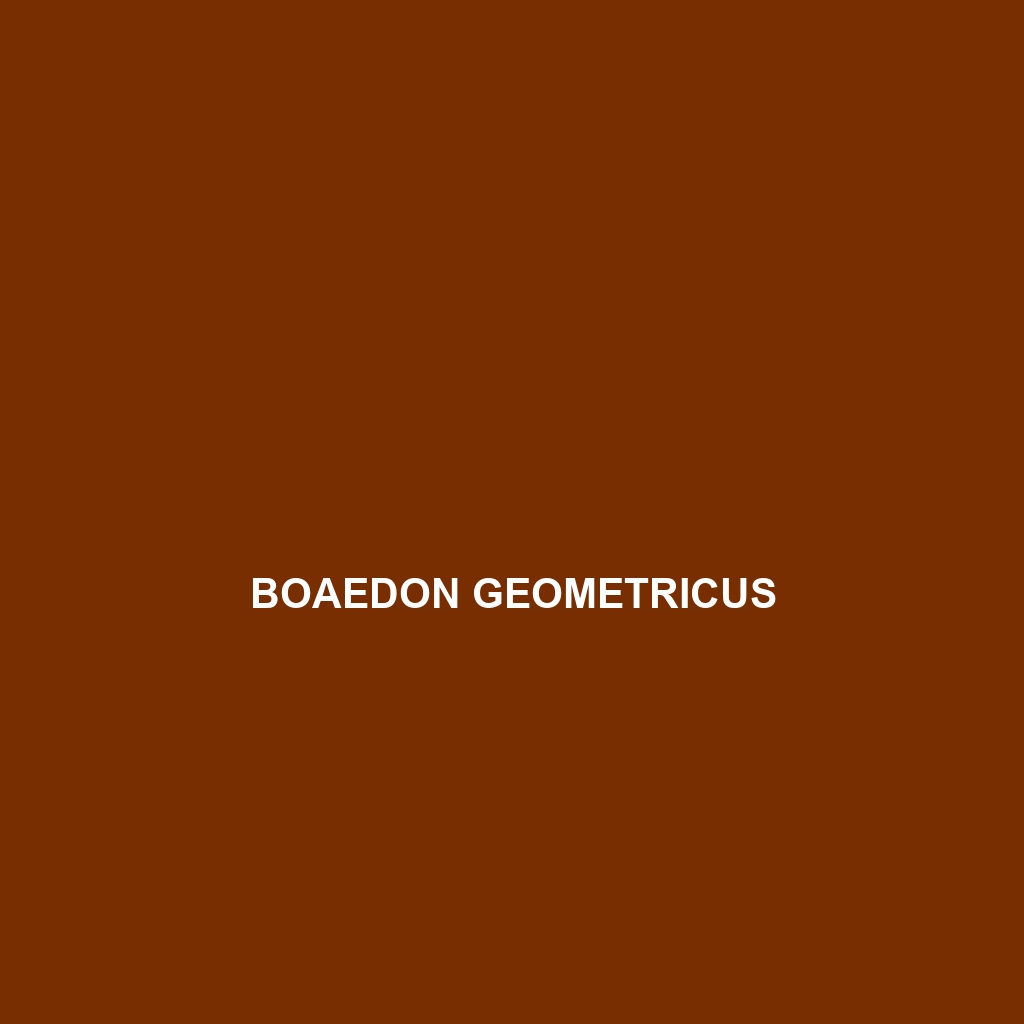Species Description: Boaedon geometricus
Common Name: Boaedon geometricus
Scientific Name: Boaedon geometricus
Habitat
Boaedon geometricus, commonly known as the African rat snake, is primarily found in various regions across Africa. This species thrives in a range of habitats including savannas, open woodlands, and grasslands. They have been observed in countries such as Tanzania, Kenya, and South Africa. Typically, these snakes prefer environments that offer ample climbing opportunities, often residing in trees and shrubs.
Physical Characteristics
Boaedon geometricus are medium-sized snakes, generally reaching lengths of 1 to 1.5 meters. They possess a slender body adorned with unique geometric patterns that vary in color, often adorned with shades of brown, gray, or olive. Their distinguishing feature is the intricate pattern of scales, which provides effective camouflage against predators and enhances their ability to ambush prey. The smooth and glossy texture of their scales adds to their striking appearance.
Behavior
This species exhibits a nocturnal behavior, primarily hunting at night. Boaedon geometricus are known for their agility and are proficient climbers, often seen skimming through branches in search of prey. They exhibit a defensive behavior by flattening their bodies when threatened, which may help deter potential predators. Their ability to blend into their environment also plays a crucial role in avoiding detection.
Diet
Boaedon geometricus primarily feeds on small mammals, birds, and occasionally lizards. Their diet may consist of common prey such as rodents and other small vertebrates. They are constrictors, utilizing their muscular bodies to subdue prey effectively before consumption. This feeding habit not only showcases their role as predators in the ecosystem but also contributes to controlling rodent populations in their habitats.
Reproduction
Breeding typically occurs between late spring and early summer, with females laying clutches of 4 to 15 eggs. The incubation period lasts approximately 60 to 90 days, after which hatchlings emerge fully formed and ready to fend for themselves. Parental care is not provided, and young Boaedon geometricus are instantly independent, relying on their instinctual skills to survive.
Conservation Status
The conservation status of Boaedon geometricus is currently classified as Least Concern by the International Union for Conservation of Nature (IUCN). While not currently facing immediate threats, habitat loss due to agricultural expansion and human encroachment poses potential risks to their populations in certain areas.
Interesting Facts
Boaedon geometricus is often mistaken for other non-venomous snake species due to its similar appearance. They are harmless to humans and play an essential role in maintaining ecological balance. Their arboreal nature and ability to adapt to various habitats make them resilient in changing environments.
Role in Ecosystem
As a predator, Boaedon geometricus plays a vital role in controlling small mammal populations, thus contributing to the ecological balance of their habitats. Their presence indicates a healthy ecosystem, as they help maintain the dynamics of the food web by preying on rodents and other small animals. Additionally, they serve as prey for larger predators, further intertwining their role in the ecosystem.
